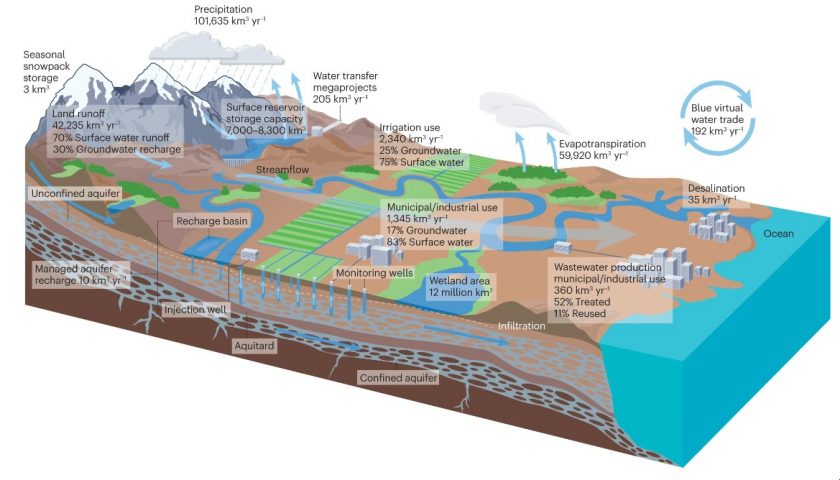Measuring and Managing the World’s Water
December 12, 2023

A review study led by the Bureau of Economic Geology and published in Nature Reviews Earth & Environment provides a look at the world’s freshwater resources and potential strategies for managing them.
Led by Bridget Scanlon, a senior research scientist at the bureau, the study draws on data from satellites, climate models, monitoring networks and almost 200 scientific papers to analyze Earth’s water supply and how it’s changing over time.
The study cites numerous examples of human activity affecting this flux between surface water and groundwater supplies. For example, surface water irrigation recharged aquifers in the early to mid-1900s in the northwestern U.S.’s Columbia Plateau and Snake River Plain, while global models show that groundwater pumping has greatly reduced the volume of water going to streams, with 15%-21% of global watersheds at risk because of the reduced flows.
The study emphasizes the inherent connection between surface water and groundwater supplies. According to the researchers, future water resilience depends on recognizing that surface water and groundwater behave as a single resource and developing water management solutions that take both water supplies into account.
The study also describes both natural and engineered approaches to water management that can help increase water supplies, reduce demand, store water and transport it. According to Scanlon, one of the best ways to adapt to increasing climate extremes is storing water during wet times and drawing on it in times of drought.
“We have droughts and we have floods,” she said. “We are trying to manage those extremes, and a way to do that is to store water.”
Back to the Newsletter